Dairy Barn Tour of the USA and the Netherlands – Part 2
We recently travelled to the USA and the Netherlands to see what can be learned from their dairy farming practices. Our key purpose was to look at hybrid systems that utilise both dairy barns and pasture grazing.
In Part 2 we cover off the key stats from the farms in The Netherlands.
THE NETHERLANDS
We based ourselves in Deventer, a city in the Salland region of the Dutch province of Overijssel. Deventer is largely situated on the east bank of the river Ijssel, but also has a small part of its territory on the west bank. It has a population of just under 100,000.
The Netherlands has no Ministry of Agriculture as farming is viewed an economic activity and comes under the Ministry of Economic Affairs. It is now operating in a no quota environment, which has seen expansion in cow numbers. To counteract this the government has introduced a contentious law requiring all dairy farms to reduce cow numbers by 20%.
We also learned that 20% of farms have robot milking machines and 25-40% of new installs are robots.
While in Deventer we visited the following farms:
Aver Heino Farm
- Organic A2 dairy farm
- Runs 115 Fleckvieh cows on a total of 86 hectare
- Produce 950,000 litres of milk and get 52 euro cents/litre
- Winter milk earns 47 euros while organic milk earns 62 euro cents/litre
- The cows produce an average of 27 litre per cow per day, doing 2.6 milkings every 24 hours through 2 robotic milking machines
- Average liveweight 700-800kgs
- From May onwards cows are outside 7.5 hours/day
- They need enough effluent storage from 1st Sept to 15th Feb
- Bull calves are sold into the veal market
- The farm is run with two fulltime and two part-time staff
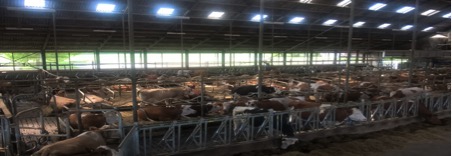
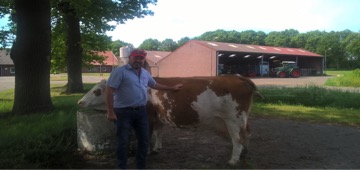
Nillesen Farm
- 80 hectare with 150 cows total, 135 are being milked through three Lely robots
- Cow production averages 870 kgs ms/cow with average cow liveweight of 625kgs
- Average age of the cows is 4 years old
- Annual rainfall of 1600-1700mm with up to five days of snow per year
- They generate solar energy with surplus sold back to the grid for 10 euro cents/Kw
- Compost bedding is used in their freestall barn with the beds topped up twice weekly
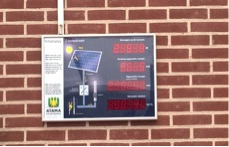
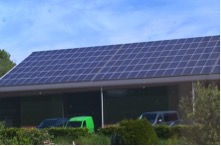
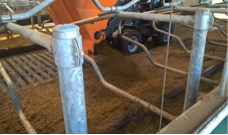
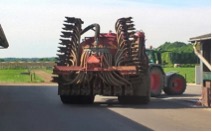
Janssen Family Farm
- 185 acre farm with a 67 acre milking platform with 115 cows
- Two Lely robotic milkers
- Cows produce 10,500 litres of milk and 800kg ms in a 305-day lactation
- Average milking life - 6 years
- Typical slatted floor barn with holding tanks underneath plus an outside storage tank
- Average SCC 100k but currently a very low 49k
- Farm produces 1.2 million litres of milk annually
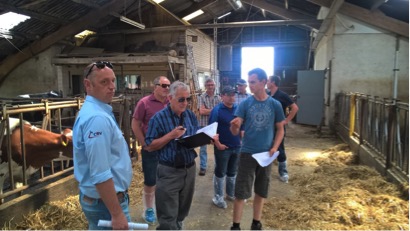
Gert Jan van Eck
- 53 hectares
- Milks 105 cows through two A4 Lely robots which cost 120,000 Euros each
- Cows last 4-5 lactations
- 2.9 to 3 milkings per 24 hour period
- 10 hectare corn silage grown
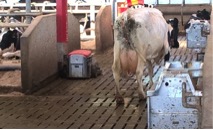
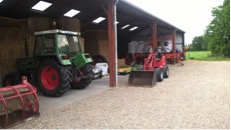
Dronten University Farm
- 340 hectare farm attached to the Dronten University teaching pig, poultry, equine and dairying
- Of the 1600 students 200 study dairying
- The farm was under water until it was reclaimed through dykes in 1967
- Dairy farm has a 16 bail herringbone, milking 60 cows and a Delaval robot milker which milks 50 cows
- Cows produce 700-800kg ms at a stocking rate of 2 cows per hectare
- They receive an 18 euro cent premium for producing organic milk
- They have recently built an open plan barn with a chip floor
- Windmills are a feature of the farm which generate lease revenue for the landowner
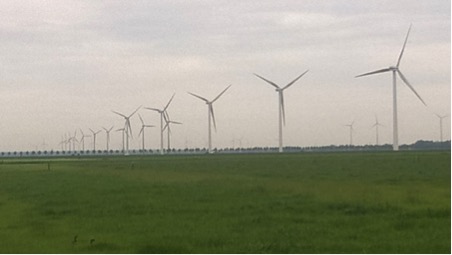
Wageningen University & Research Centre
- Considered one of the top agricultural study centres in the world
- Cows spend 5 months indoors from November-March
- 550 cows, 490 cows milked through a 40 bail rotary shed and 60 cows through a Delaval robot milker
- 160k SCC
- Average barn cow liveweight is 600-700kg
- Paddock cows 50kg lighter
- Barn labour needs to be high competence to handle the data collection for the research it carries out
- They are doing dairy cow emissions research in a sealed shed equipped with monitors
- The cows receive 6kg of concentrates at milking
- Some barn cows are collared and allocated a specific feed bin per two cows
- All feed put into and eaten out of the bin, is weighed
- All the feed is prepared automatically and put in the bins by an automatic feed wagon
- The cows take one day to learn which bin contains the ration allocated to her
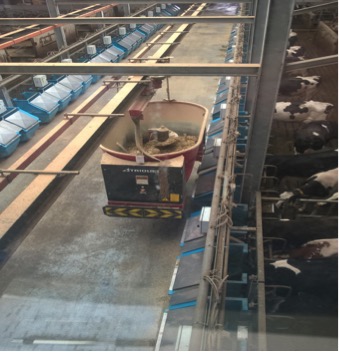
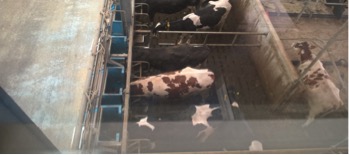

A big thank you to Peter Van Elzakker, NZ based CRV Global Product Manager, for organising some farm visits and introductions with key CRV Netherlands staff.
